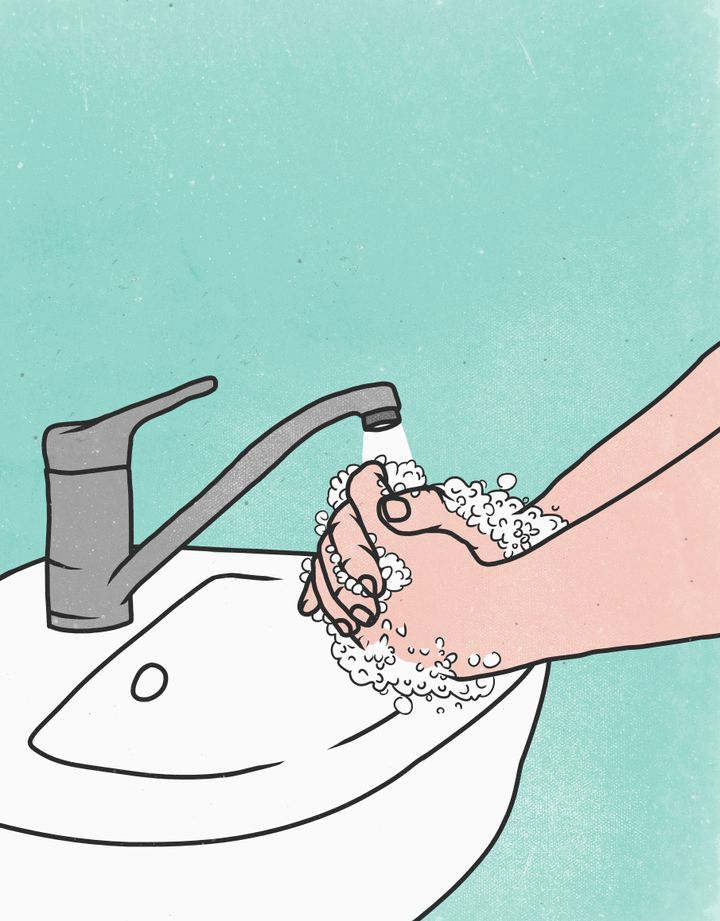Forget eating undercooked chicken, you’re more likely to spread antibiotic-resistant E.coli by not washing your hands after going to the toilet, new research suggests.
Until now, it wasn’t known whether antibiotic-resistant E. coli, which can cause dangerous bloodstream infections, are more likely to be picked up through the food chain or passed from person-to-person.
So researchers from a consortium, including the University of East Anglia, put it to the test.
What is E.coli?
We all harmlessly carry E.coli in our gut. Some strains can cause food poisoning resulting in unpleasant symptoms like nausea, vomiting and diarrhoea, while other strains can cause urinary tract infections (UTIs) and infections after gut surgery. At worst, these can develop into bloodstream infections.
E. coli has become considerably more resistant to antibiotics over the past 20 years both in humans and animals, who also carry strains of it in their gut.
Strains of particular concern are those with something called ‘extended spectrum beta-lactamases’ (ESBLs). These are enzymes that destroy many important penicillin and cephalosporin antibiotics. Strains with ESBLs often have other key resistances, too.
Around 10% of blood poisoning cases are caused by highly-resistant strains of E.coli with ESBLs, said researchers. Mortality rates among people infected with these superbug strains are double those of people infected with strains that are susceptible to treatment.

“E. coli has become considerably more resistant to antibiotics over the past 20 years both in humans and animals.”
What did the study find?
Scientists looked at the genetic make-up of resistant E. coli from multiple sources across the UK, including from human bloodstream infections, human faeces, human sewage, animal slurry, some types of meat including beef, pork and chicken, as well as fruit and salad.
Their report in The Lancet Infectious Diseases found that antibiotic-resistant ‘superbug’ strains of E. coli from human blood, faeces and sewage samples were similar to one another.
Meanwhile resistant E. coli strains from meat – particularly chicken, cattle and animal slurry – were largely different to those infecting humans.
There was little crossover of antibiotic-resistant E. coli from animals to humans, they said.
What does this mean?
Lead author Professor David Livermore, from UEA’s Norwich Medical School, said: “The great majority of strains of ESBL-E. coli causing human infections aren’t coming from eating chicken, or anything else in the food chain.
“Rather – and unpalatably – the likeliest route of transmission for ESBL-E. coli is directly from human-to-human, with faecal particles from one person reaching the mouth of another.”
That’s not to say you should go around eating and manhandling raw meat, however. Prof Livermore concluded: “We need to carry on cooking chicken well and never to alternately handle raw meat and salad. There are plenty of important food-poisoning bacteria, including other strains of E. coli, that do go down the food chain.
“But here – in the case of ESBL-E. coli – it’s much more important to wash your hands after going to the toilet. And it’s particularly important to have good hygiene in care homes, as the most of the severe E. coli infections occur among the elderly.”
Public Health England’s Professor Neil Woodford said driving down inappropriate prescribing of antibiotics is key to tackling resistance, but so too is reducing infections in the first place.
“In order to limit serious, antibiotic resistant E. coli bloodstream infections, we must focus on thorough hand washing and good infection control, as well as the effective management of urinary tract infections,” he said.
